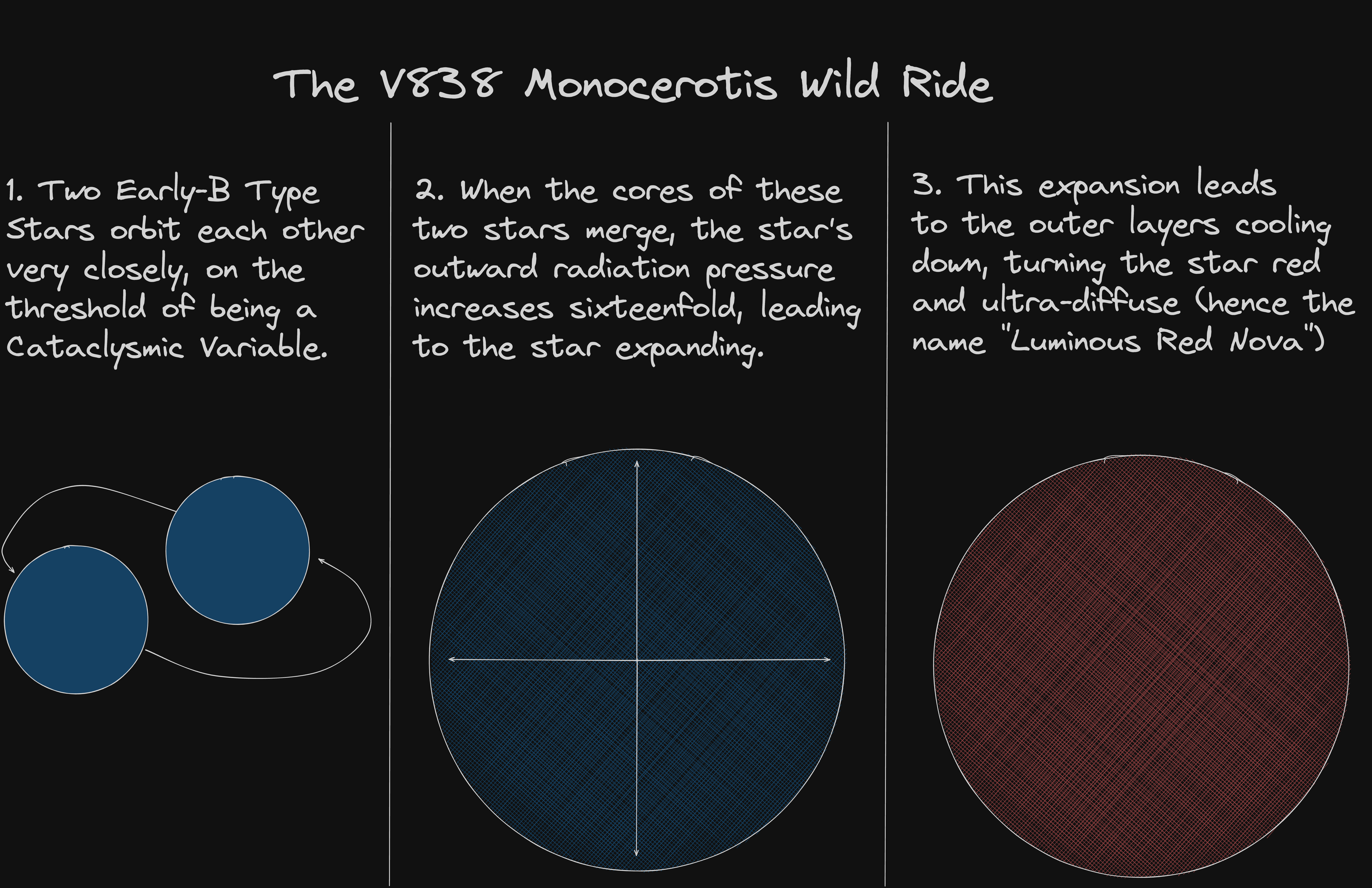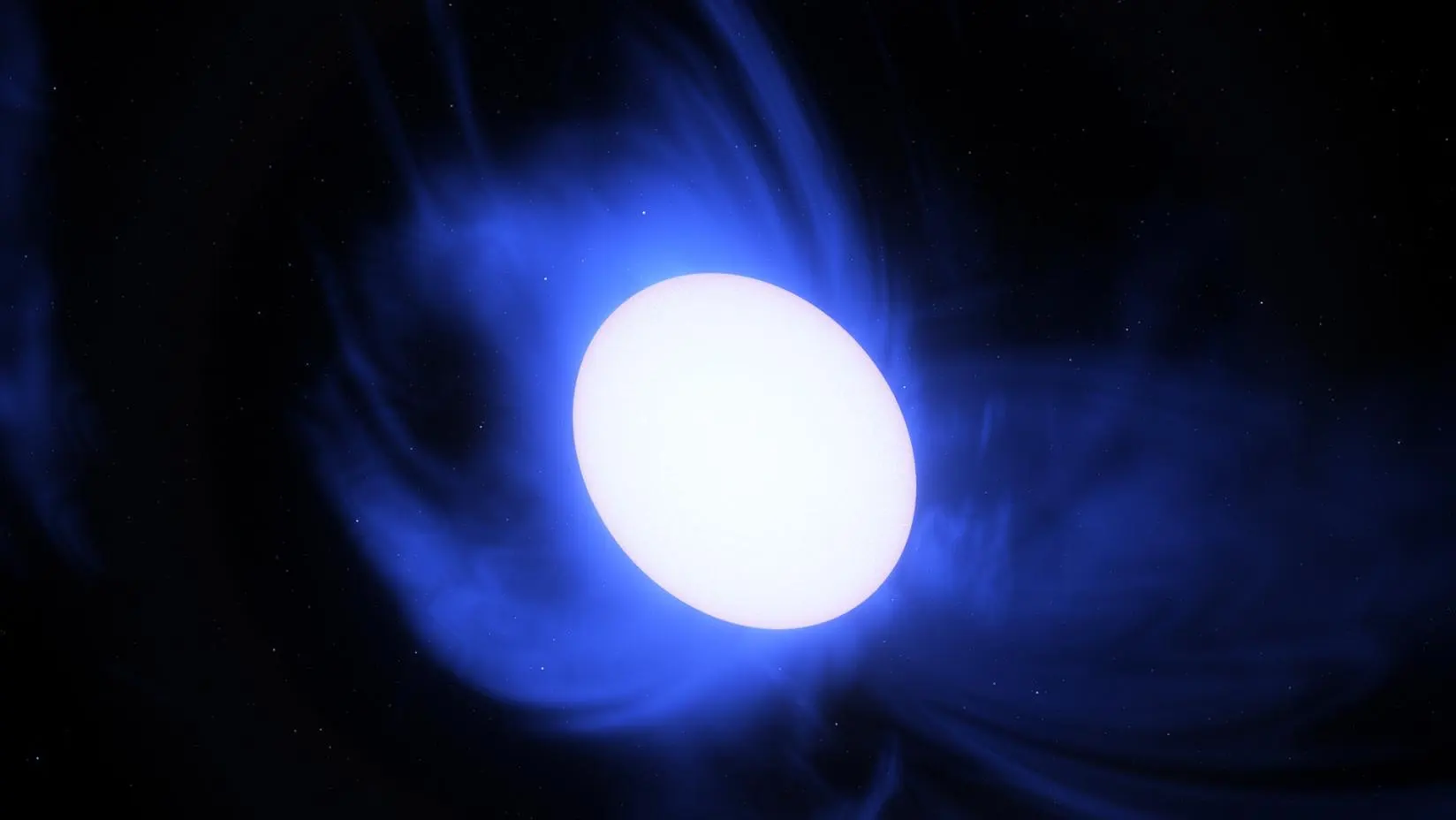I’m trying something new. See the number of blogs drop - but their quality increase, hopefully. Tell me how this flows!
Novae are the less popular younger brother to the supernovae, with the latter often an impetus for inspiring science fiction stories. It’s a lot harder to come across people who can explain novae instead of their super-cousins!
To inch ourselves towards this obscure corner of astrophysics, let’s take a look at a particularly dazzling example - V838 Monocerotis, a star that shot stardom after Hubble set its sights on it.
Let’s go to the constellation of Monoceros, better known as the Unicorn. There’s a nebula here, 20,000 light years away from our blue marble, where early B- to late O type stars dot the skies, shining a brilliant blue. Somewhere in this nebula is a special trinary star system, consisting of a very compact binary star component and a separate companion further away.
By virtue of chaos theory, this configuration of stars isn’t the most stable. Eventually, something’s going to have to give. In our case, the compact binary slowly radiates its mechanical energy away as gravitational waves as the two stars spiral closer in a dance of death.
Once the cores of the two stars combine, a final thermal pulse is released. However, not all is well within the star - the combined star’s new mass isn’t enough to hold back the core, now fusing material nearly twice as fast. As the star expands, it’s outer layers turn white, yellow, orange, then a shade of crimson red as the radiation pressure from the now much more energetic core pushes the star outwards. Here’s a ‘helpful’ diagram to illustrate the process so far; feel free to come back to it later!

As this happens, the outer layers of the stars do not escape unscathed. Material is shot off both stars as their outer layers collide with each other, forming a cloud of dust and gas - a nebula. Eventually, this gas settles into a concave ring, forming a reflection nebula (or light echo) facing us!
These days, V838 Mono is shrinking, and shrinking fast. Its outer layers are slowly collapsing in on itself as gravity allows the star to clump together again. Nevertheless, there’s still much to learn about this star even as it fades from view and much of its new properties, such as its mass, are an enigma. It’d be nice to take JWST out for a spin and take another look at this star, though that remains a distant dream of mine.
It’ll happen one day! A Nancy Grace Roman Telescope proposal beckons…

Like what you see? Feel free to subscribe to our blog to receive updates whenever we post.